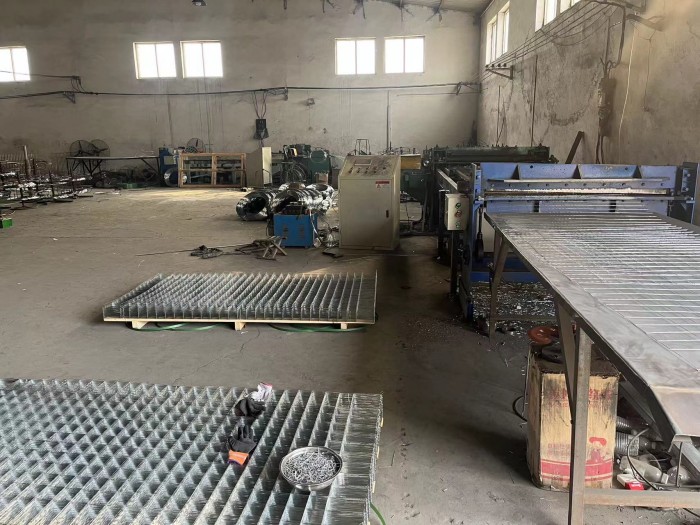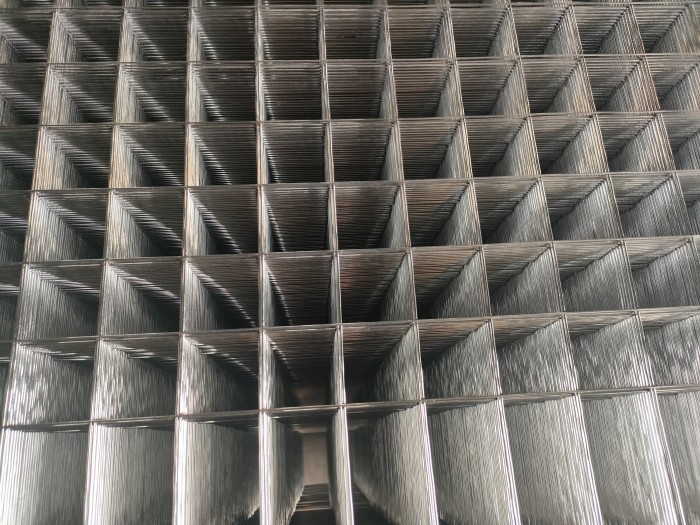The production process of Welded Wire Mesh Panels typically involves the following steps: 1. Wire Drawing: The first step in the production process is wire drawing. Raw wire material, usually made of steel, is fed into a machine that pulls it through a series of dies to reduce its diameter and increase its length. This process helps to improve the wire's strength and flexibility. 2. Wire Straightening and Cutting: After wire drawing, the wire is straightened and cut to the desired length. This is typically done using a machine that straightens the wire and then cuts it into individual pieces. 3. Welding: The straightened and cut wires are then fed into a welding machine. The machine uses electricity to heat the wires and join them together at their intersection points. This process creates a grid-like pattern, forming the welded WIRE MESH panel. 4. Mesh Panel Formation: The welded wire mesh panels are formed by cutting the welded wire mesh into the desired dimensions. This is usually done using a machine that can cut the mesh to specific sizes and shapes. 5. Surface Treatment: After the mesh panels are formed, they may undergo surface treatment to improve their durability and resistance to corrosion. This can involve processes such as galvanization, where the panels are dipped in a bath of molten zinc to create a protective coating. 6. Quality Control: Throughout the production process, quality control measures are implemented to ensure that the welded wire mesh panels meet the required specifications. This can involve visual inspections, measurements, and testing for strength and durability. Overall, the production process of welded wire mesh panels involves wire drawing, straightening and cutting, welding, mesh panel formation, surface treatment, quality control, and packaging. This process ensures the production of high-quality panels that are suitable for various applications, such as fencing, construction, and industrial uses.
1. Construction and infrastructure: Welded wire mesh panels are used in the construction industry for reinforcing concrete structures such as walls, slabs, and columns. They provide strength and stability to the concrete, preventing cracks and enhancing durability.
2. Security fencing: Welded wire mesh panels are commonly used for creating security fences and enclosures. They provide a strong and secure barrier, making them ideal for protecting commercial and industrial properties, prisons, airports, and military installations.
3. Animal enclosures: Welded wire mesh panels are used in the construction of animal enclosures such as cages, kennels, and aviaries. They provide a safe and secure environment for animals, ensuring proper containment and protection.
4. Agriculture and farming: Welded wire mesh panels are used in the agricultural industry for various purposes. They can be used for creating animal pens, poultry cages, and fencing for livestock. They also serve as a barrier to protect crops from animals and pests.
5. Gabion walls: Welded wire mesh panels are used in the construction of gabion walls, which are used for erosion control, slope stabilization, and retaining walls. The panels are filled with stones or other materials, creating a strong and durable structure.
6. Industrial storage and shelving: Welded wire mesh panels are used in the construction of storage racks and shelving units in warehouses, factories, and retail spaces. They provide a sturdy and adjustable storage solution for organizing and storing various items.
7. Decorative applications: Welded wire mesh panels can be used for decorative purposes in architectural and interior design. They can be used as partitions, screens, and cladding for creating unique and visually appealing spaces.


